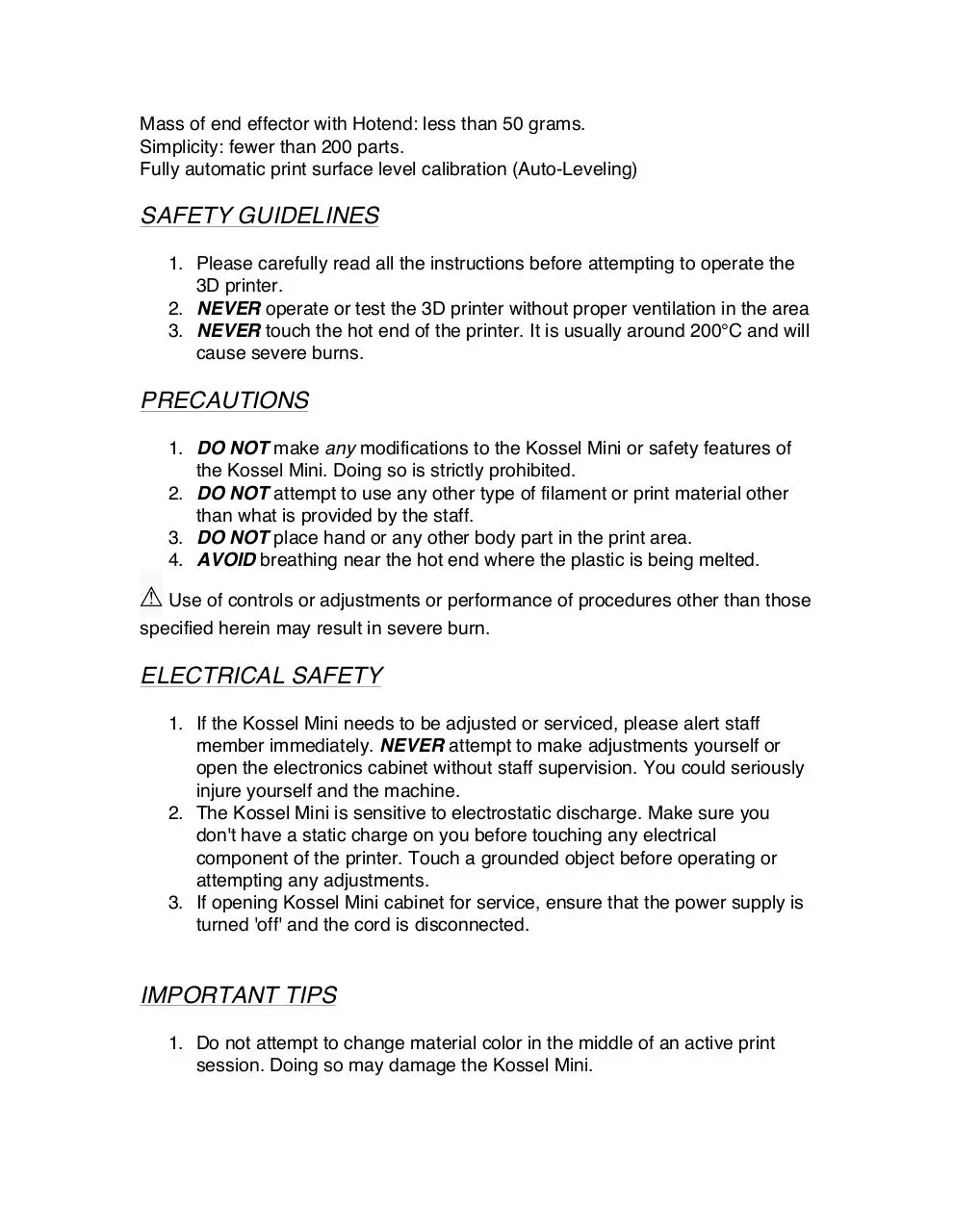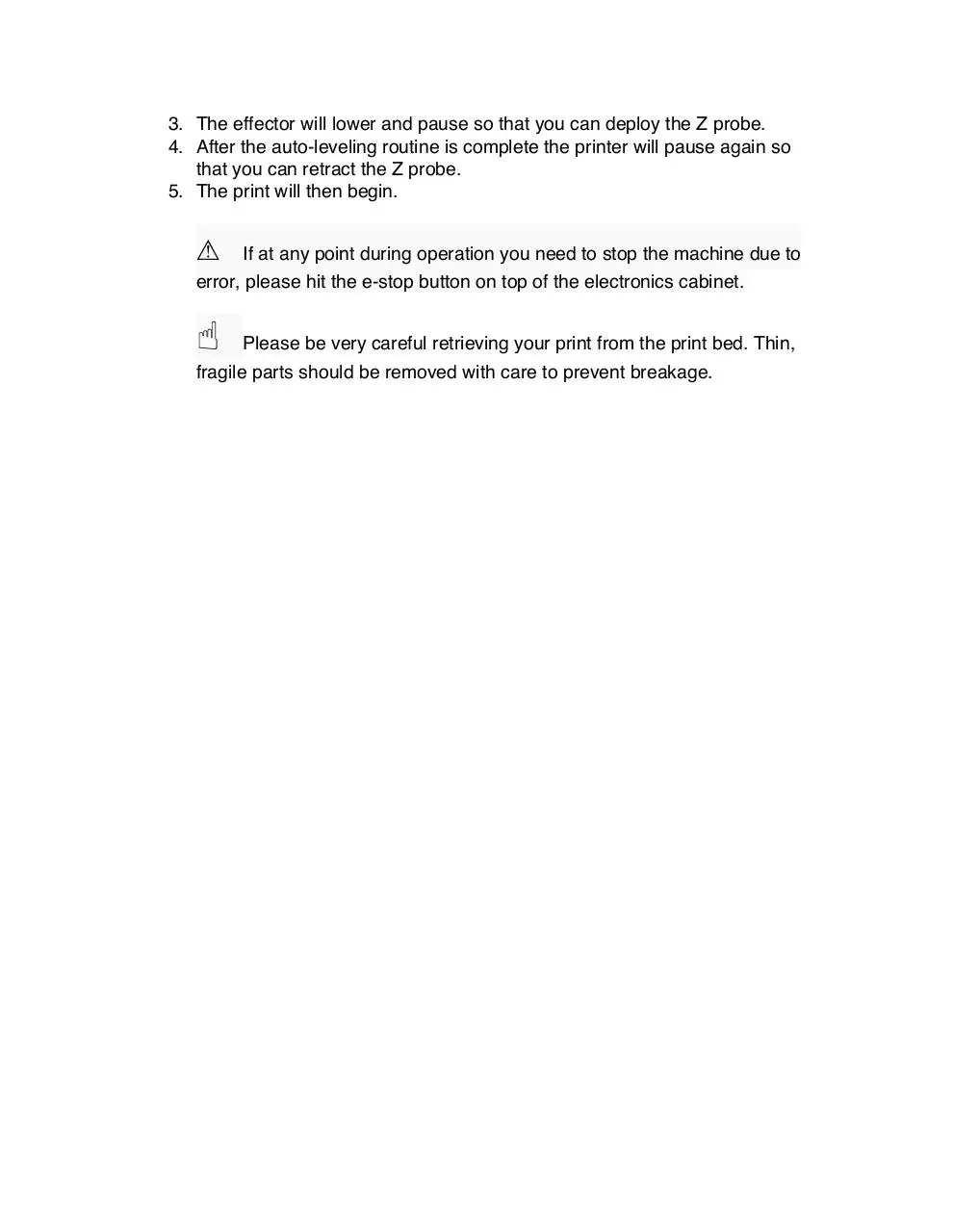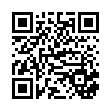Kossel Mini 3D Printer Safety and Usage Guidelines (PDF)
File information
Title: Microsoft Word - Kossel Mini 3D Printer Safety and Usage Guidelines.docx
This PDF 1.3 document has been generated by Word / Mac OS X 10.10 Quartz PDFContext, and has been sent on pdf-archive.com on 28/12/2014 at 03:39, from IP address 99.68.x.x.
The current document download page has been viewed 1033 times.
File size: 123.45 KB (5 pages).
Privacy: public file





File preview
806 Montana Ave. El Paso, TX 79902
fablabelpaso.org 915.209.2656 info@fablabelpaso.org
Kossel Mini 3D Printer Safety and Usage Guidelines
Kossel Mini 3D Printer
Safety Guidelines
ABOUT
Welcome, new user! Kossel is a parametric delta robot 3D printer, built in 2012
by Johann C. Rocholl, father of deltabot printers. It is semi self-replicating and
named after Albrecht Kossel, a German biochemist and pioneer in the study of
genetics.
The Kossel Mini design has three arms, each attached to an independent,
stepper-driven vertical axis, which results in a simpler machine with a smaller
footprint and faster positioning than other printers. In deltabots, as opposed to a
Cartesian printer, linear motion is generated by three drive towers, so the print
head can move equally fast in the x-, y- and z-axis, with fewer moving parts (think
rectangle v. triangle). A Bowden extruder keeps the head light and balanced.
Best of all it has an auto-leveling probe that hops around the build platform,
which is always entertaining to watch.
The prints are made with PLA filament.
SPECIFICATIONS
Type: Delta printer
Speed: 320 mm/s in all 3 directions.
Resolution: 100 steps/mm in all 3 directions.
Repeatability: better than 0.03 mm (30 micron)
Build volume: cylindrical, 170mm diameter, 240mm height.
Footprint: triangle, 300 mm width (240mm OpenBeam + printed corners).
Frame height: 600 mm.
Print surface: unheated round glass, doesn't move.
Mass of end effector with Hotend: less than 50 grams.
Simplicity: fewer than 200 parts.
Fully automatic print surface level calibration (Auto-Leveling)
SAFETY GUIDELINES
1. Please carefully read all the instructions before attempting to operate the
3D printer.
2. NEVER operate or test the 3D printer without proper ventilation in the area
3. NEVER touch the hot end of the printer. It is usually around 200°C and will
cause severe burns.
PRECAUTIONS
1. DO NOT make any modifications to the Kossel Mini or safety features of
the Kossel Mini. Doing so is strictly prohibited.
2. DO NOT attempt to use any other type of filament or print material other
than what is provided by the staff.
3. DO NOT place hand or any other body part in the print area.
4. AVOID breathing near the hot end where the plastic is being melted.
⚠ Use of controls or adjustments or performance of procedures other than those
specified herein may result in severe burn.
ELECTRICAL SAFETY
1. If the Kossel Mini needs to be adjusted or serviced, please alert staff
member immediately. NEVER attempt to make adjustments yourself or
open the electronics cabinet without staff supervision. You could seriously
injure yourself and the machine.
2. The Kossel Mini is sensitive to electrostatic discharge. Make sure you
don't have a static charge on you before touching any electrical
component of the printer. Touch a grounded object before operating or
attempting any adjustments.
3. If opening Kossel Mini cabinet for service, ensure that the power supply is
turned 'off' and the cord is disconnected.
IMPORTANT TIPS
1. Do not attempt to change material color in the middle of an active print
session. Doing so may damage the Kossel Mini.
2. Avoid touching any component of the printer in order to achieve the best
quality print. Don’t touch the print head during auto-leveling. Doing so will
cause an inaccurate reading and can cause the probe to tear the tape on
the platform. Also be careful not to bump the extruder or filament spool as
it could cause the plastic to deposit unevenly.
3. Keep this printer cool. If you suspect the printer is overheating, please
alert the staff immediately.
806 Montana Ave. El Paso, TX 79902
fablabelpaso.org 915.209.2656 info@fablabelpaso.org
Kossel Mini 3D Printer
Usage Guidelines
Congratulations! After carefully reviewing the Safety Guidelines, you are now
ready to set up the machine for printing.
SETUP
1.
2.
3.
4.
5.
Turn on Kossel Mini by turning red e-stop button on top of the machine.
Open Repetier Host.
Establish a connection to the printer.
Click Home All to home the printer.
Turn on the heat to the extruder to warm the hotend at 170 °C.
FILE PREP
1. Open STL file in KISSlicer.
☝
The default settings will print well under most circumstances. You
may edit the print parameters but print quality may suffer.
2. Click Slice.
3. After slicing, click Save.
PRINTING
1. Load g-code into Repetier Host.
2. Click Run to begin printing.
3. The effector will lower and pause so that you can deploy the Z probe.
4. After the auto-leveling routine is complete the printer will pause again so
that you can retract the Z probe.
5. The print will then begin.
⚠
If at any point during operation you need to stop the machine due to
error, please hit the e-stop button on top of the electronics cabinet.
☝
Please be very careful retrieving your print from the print bed. Thin,
fragile parts should be removed with care to prevent breakage.
Download Kossel Mini 3D Printer Safety and Usage Guidelines
Kossel Mini 3D Printer Safety and Usage Guidelines.pdf (PDF, 123.45 KB)
Download PDF
Share this file on social networks
Link to this page
Permanent link
Use the permanent link to the download page to share your document on Facebook, Twitter, LinkedIn, or directly with a contact by e-Mail, Messenger, Whatsapp, Line..
Short link
Use the short link to share your document on Twitter or by text message (SMS)
HTML Code
Copy the following HTML code to share your document on a Website or Blog
QR Code to this page

This file has been shared publicly by a user of PDF Archive.
Document ID: 0000201163.